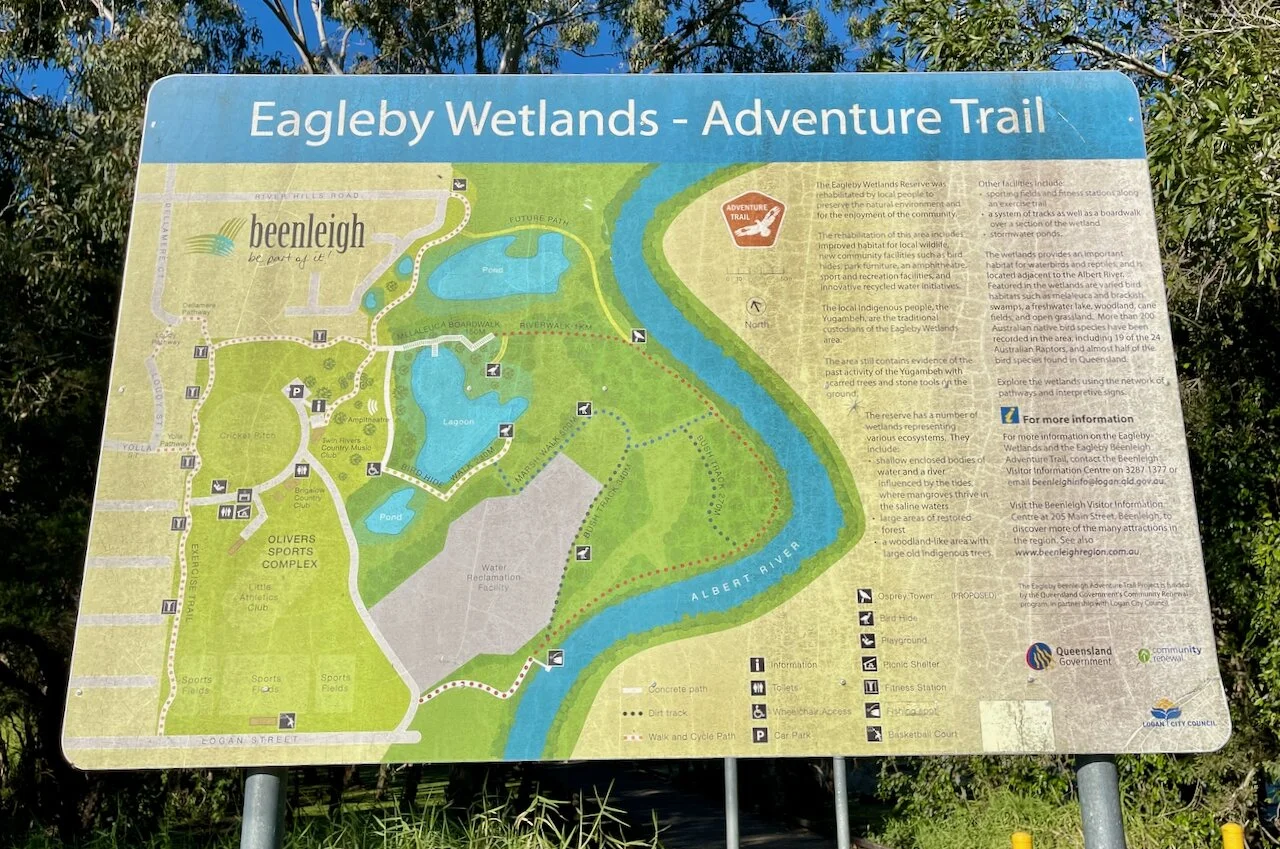In Photos: The Birds of Eagleby Wetlands, QLD
We’ve recently ‘discovered’ a bird photography hotspot at Eagleby Wetlands. This gorgeous little lagoon system can be found near the bright lights of Beenleigh, between Brisbane and the Gold Coast. It’s an excellent spot, somewhat randomly sandwiched in between a country music hall and the Albert River.
Over 200 bird species (205 on eBird when I just checked now) have been identified at the site, including 19 of the 24 Australian raptor species. There are multiple species of fairywrens, forest kingfishers, and loads of other gorgeous animals. I’m hoping that there might be a few reptiles about once the weather warms up again, too…
There’s a useful map of the Wetlands area at the start of the boardwalk – you can download a pdf version of the trail map here.
Boardwalk across the main lagoon – a good area for kingfishers!
The lagoon from the boardwalk
Wandering whistling ducks on the lagoon
An intermediate egret stalks the margins
Aside from the lagoons, there are multiple habitats within this area, including the Albert River edge (good for raptors), canefields (lots of fairywrens), and woodland.
We’ll be visiting Eagleby Wetlands regularly when we’re heading south – it’s just off the motorway, so it’s an easy stopover. It’s flat and flip-floppable, so the area is accessible for all, and there’s plenty to see.
The main track through the Wetlands area
Red-backed fairywren – check out the canefields for these.
Rufous whistler
Spangled drongo
Wildlife photography notes
There are plenty of birds to be seen at the Eagleby Wetlands, but these little feathered gits are always tough photo subjects. We use our Sony A7R III cameras with the Sony 100–400 GM lens (Mads) and Sony 200–600 G lens (me).
Both of us tend to wander around with our cameras in Aperture priority – set to the lowest possible aperture, f/5.6–6.3, in my case – using Auto ISO Min. SS set to fast. You can see how that works here:
My upper ISO limit on the A7R III has been 12,800, but I’m reconsidering that seeing how unbelievably well DxO PureRaw 2 (plus Topaz Photo AI) deals with image noise – I need to do some testing, but 16,000 seems to look fine. Amazeballs.
There are opportunities for getting birds-in-flight (BIF) shots here, particularly for waterbirds at the lagoon and raptors doing fly-bys overhead or along the river, so I’ve set the Focus Hold button on both lens to my current preferred BIF setting: 1/4000 sec, f/6.3, Auto ISO, with focus area set to Zone (and AF-ON). I do that by setting the button to Recall Custom Hold. That allows me to mash the button in a panic and fire off a few shots if the situation presents itself.
See another Mark Galer video for details on that:
I’m typically using single-point focus for birds so that I can ensure I’m focused on their closest eye.
Little corellas – you’ll see plenty of these near the carpark in the evening.
Tawny frogmouth – this one was sitting on the handrail at the country music hall!
Magpie
Kookaburra
Striated pardalote
Hopefully I’ve convinced you that Eagleby Wetlands area is a great place to take a walk! We’ll definitely head back there soon, so I’ll keep adding notes as they occur to me. If you have any questions in the meantime, just shoot us a note below :)
Simon.















